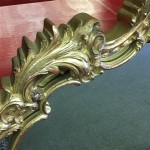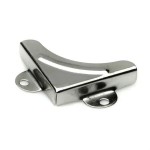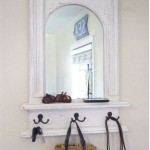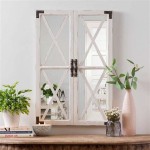Can You Frame a Bathroom Mirror?
Framing a bathroom mirror can significantly elevate the aesthetic of a space, transforming a standard, builder-grade fixture into a stylish focal point. This seemingly simple upgrade can add a touch of elegance, personalize the room, and even create an illusion of more space. However, the humid environment of a bathroom presents specific challenges that must be considered before undertaking this project. Careful planning and execution are vital for a successful and lasting outcome.
Choosing the Right Frame Material
The bathroom's high humidity levels necessitate careful material selection for the frame. Wood, while aesthetically pleasing, can warp or rot if exposed to excessive moisture. Therefore, opt for water-resistant materials such as treated lumber specifically designed for bathrooms, or consider alternatives like PVC, composite materials, or metal. These materials offer durability and resistance to moisture damage, ensuring the frame's longevity in the bathroom environment.
When choosing a frame material, consider the overall design aesthetic of the bathroom. A sleek metal frame complements a modern or minimalist design, while a more ornate, waterproof resin frame might suit a traditional or eclectic style. The frame should complement the existing décor and enhance the overall visual appeal of the space.
Preparing the Mirror and Wall
Proper surface preparation is crucial for a successful framing project. Before beginning, thoroughly clean the mirror surface with a glass cleaner to remove any dust, grime, or residue. This will ensure proper adhesion of any adhesives used during the framing process. The wall surrounding the mirror should also be cleaned and dried to create a suitable surface for attaching the frame.
Accurate measurements are essential for a precise fit. Carefully measure the dimensions of the mirror, ensuring accurate recordings to avoid discrepancies. These measurements will guide the purchase or construction of the frame, ensuring a seamless fit around the mirror. Double-checking measurements is highly recommended to eliminate potential errors.
If the existing mirror is glued to the wall, removing it can be challenging and may risk damaging the wall. In such cases, framing over the existing mirror is a viable option. However, this method may slightly reduce the reflective surface area. Alternatively, if the mirror is attached with clips, removal is typically simpler, allowing for more flexibility in framing options.
Methods for Framing a Bathroom Mirror
Several methods can be employed to frame a bathroom mirror, each with its advantages and disadvantages. One common approach is using adhesive. Specialized mirror adhesive, often available in caulking tubes, provides a strong bond and can accommodate slight irregularities in the wall or mirror. This method is particularly suitable for lighter frames.
For heavier frames, a more robust approach might involve using clips or brackets to secure the frame to the wall. This method offers increased stability and support, preventing the frame from shifting or detaching over time. Ensure the clips or brackets are compatible with the chosen frame material and the wall surface.
Another option is building a frame directly onto the wall around the mirror. This involves attaching molding or trim directly to the wall, creating a frame structure that encloses the mirror. This method works well for mirrors that are already adhered to the wall and cannot be easily removed. Careful planning and precise cutting are essential for a clean and professional finish.
For those seeking a simpler, less permanent solution, adhesive-backed frame strips can be used. These strips are applied directly to the mirror's edge, creating a decorative border. While easier to install, this method may offer less durability and customization compared to building a full frame.
Sealing and Finishing the Frame
Once the frame is installed, sealing any gaps between the frame and the mirror or wall is crucial to prevent moisture infiltration. A waterproof sealant, such as silicone caulk, provides a barrier against moisture and helps protect the frame and wall from damage. Apply the sealant carefully, ensuring a smooth and even finish.
The final step involves finishing the frame to enhance its appearance and protect it from the bathroom environment. A coat of paint, varnish, or sealant designed for bathroom use can add a layer of protection and enhance the frame's aesthetics. Choose a finish that complements the overall bathroom design and provides sufficient moisture resistance. Regular cleaning and maintenance will help preserve the frame's appearance and prolong its lifespan.

How To Frame A Mirror

How To Frame Out That Builder Basic Bathroom Mirror For 20 Or Less

How To Install A Mirrorchic Bathroom Mirror Frame Momhomeguide Com

Diy Framed Bathroom Mirrors Living With Lady

Diy Bathroom Mirror Frame With Molding The Happier Homemaker

Diy Bathroom Mirror Frame Without Removing Clips Her Happy Home

Framing A Bathroom Mirror Tempting Thyme

Bathroom Mirror Frames 2 Easy To Install Sources A Diy Tutorial Retro Renovation

Diy Bathroom Mirror Frame For Under 10 O Hayley Blog

How To Build A Wood Frame Around Bathroom Mirror Young House Love








